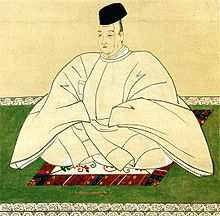

Emperor of Japan
Morohito 23 September 1771
11 December 1840(1840-12-11) (69) Sakuramachi-den (桜町殿) of the Kyoto
Era dates See list Keichō(1596–1615) Genna (1615–1624) Kan'ei (1624–1644)
Emperor of Japan Emperor Kōkaku (光格天皇 , Kōkaku-tennō, 23 September 1771 – 11 December 1840) was the 119th Emperor of Japan, according to the traditional order of succession. Kōkaku reigned from 16 December 1780 until his abdication on 7 May 1817 in favor of his son, Emperor Ninkō. After his abdication, he ruled as Daijō Tennō (太上天皇 , Abdicated Emperor) also known as a Jōkō (上皇 ) until his death in 1840. The next emperor to resign of his own accord was Akihito, the Emperor of the Heisei Era, in 2019, 202 years later. Major events in Kōkaku's life included an ongoing famine that affected Japan early into his rule. The response he gave during the time was welcomed by the people, and helped to undermine the shōgun's authority. The Kansei Reforms came afterwards as a way for the shōgun to cure a range of perceived problems which had developed in mid-18th century but was met with partial success. A member of a cadet branch of the Imperial Family, Kōkaku is the founder of the dynastic imperial branch which currently sits on the throne. Kōkaku had one spouse during his lifetime, and six concubines who gave birth to sixteen children. Only one son, Prince Ayahito, survived into adulthood and eventually became the next Emperor. Genealogically, Kōkaku is the lineal ancestor of all the succeeding Emperors up to the current Emperor, Naruhito.

We use cookies
We use cookies and other tracking technologies to improve your browsing experience on our website, to show you personalized content and targeted ads, to analyze our website traffic, and to understand where our visitors are coming from. Privacy Policy.